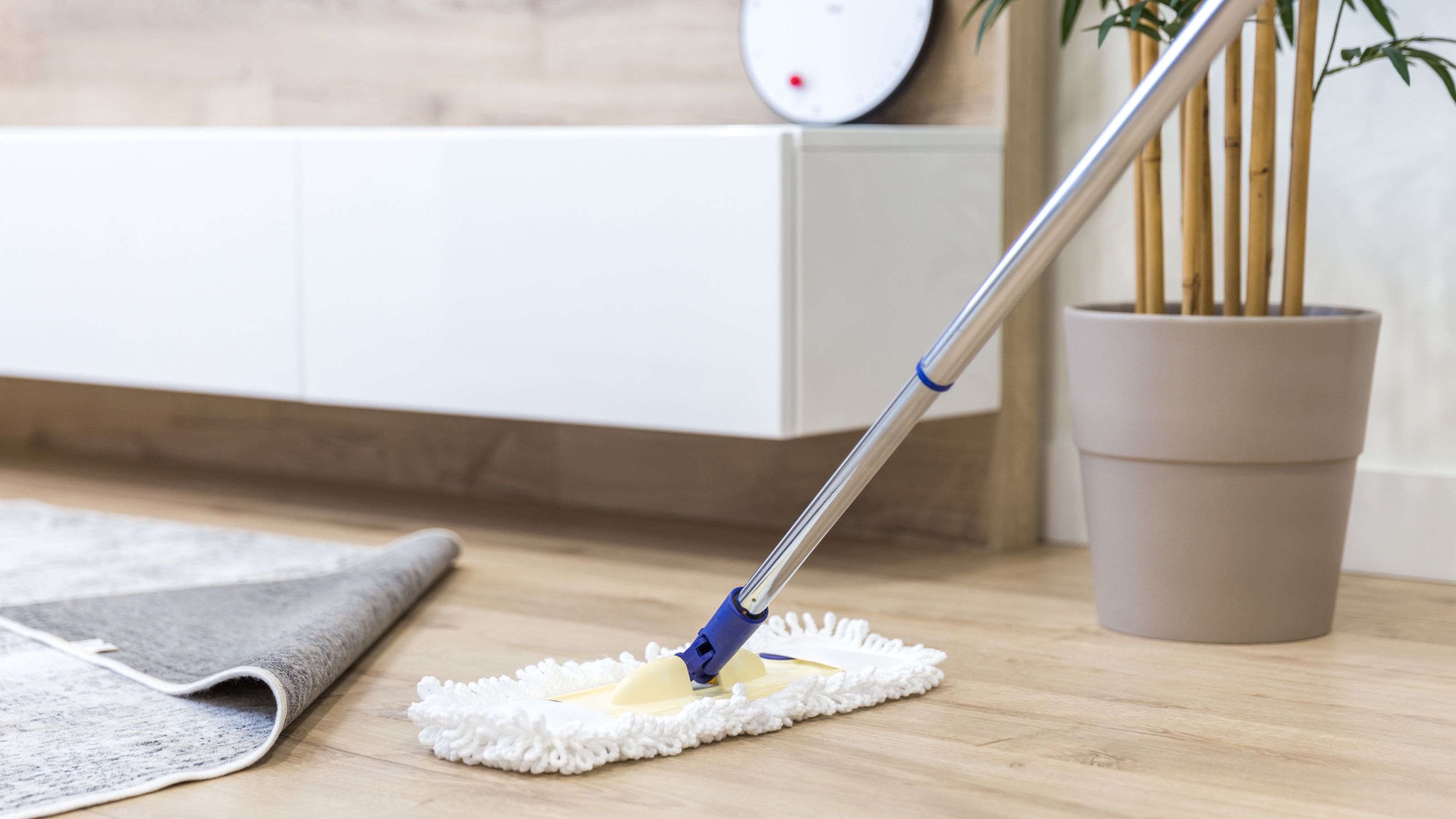
Learning how to clean floors with vinegar is a great way to maintain a hygienic and welcoming home, plus, it's easy, eco-friendly, and effective to boot.
Vinegar is the secret to shiny floors across the country so our cleaning experts reveal exactly how to clean your floors with vinegar, which solutions to use on which floors, and the materials to avoid, too.
When it comes to cleaning your home, there’s no better place to start than using vinegar to ditch the dirt and add a flourish to your floors.
How to clean floors with vinegar and the areas to avoid
Used for centuries as a cleaning agent thanks to its acidic nature, vinegar is an easily-accessible ticket to transforming floors from grubby to gorgeous and our guide features advice and tips from professional cleaners.
Where our pros have suggested products, our in-house shoppers have curated highly-rated picks from trusted retailers.
Prices were correct at the time this article was published.
Why vinegar?
Vinegar’s acidic nature means it's been used as a cleaning agent for centuries. Acting as a mild disinfectant, vinegar is remarkably effective against bacteria, viruses and mold. It’s also non-toxic, environmentally-friendly, and budget-friendly — what’s not to love?
However, not all types of vinegar are suitable for cleaning floors. White distilled vinegar is highly recommended due to its neutral pH and lack of color, which prevents staining (we like the Heinz All Natural Distilled White Vinegar from Amazon).
Cleaning vinegar has similar properties, but with an increased acidity. Though typically more expensive, apple cider vinegar is also a great option for cleaning thanks to its antibacterial qualities and pleasant scent (we recommend the Good & Gather Apple Cider Vinegar from Target).
After selecting your vinegar, there’s also the floor type to consider. Some floors suit vinegar better than others, and you’ll want to vary the dilution also, covered in our expert guide.
1. How to clean laminate floors with vinegar
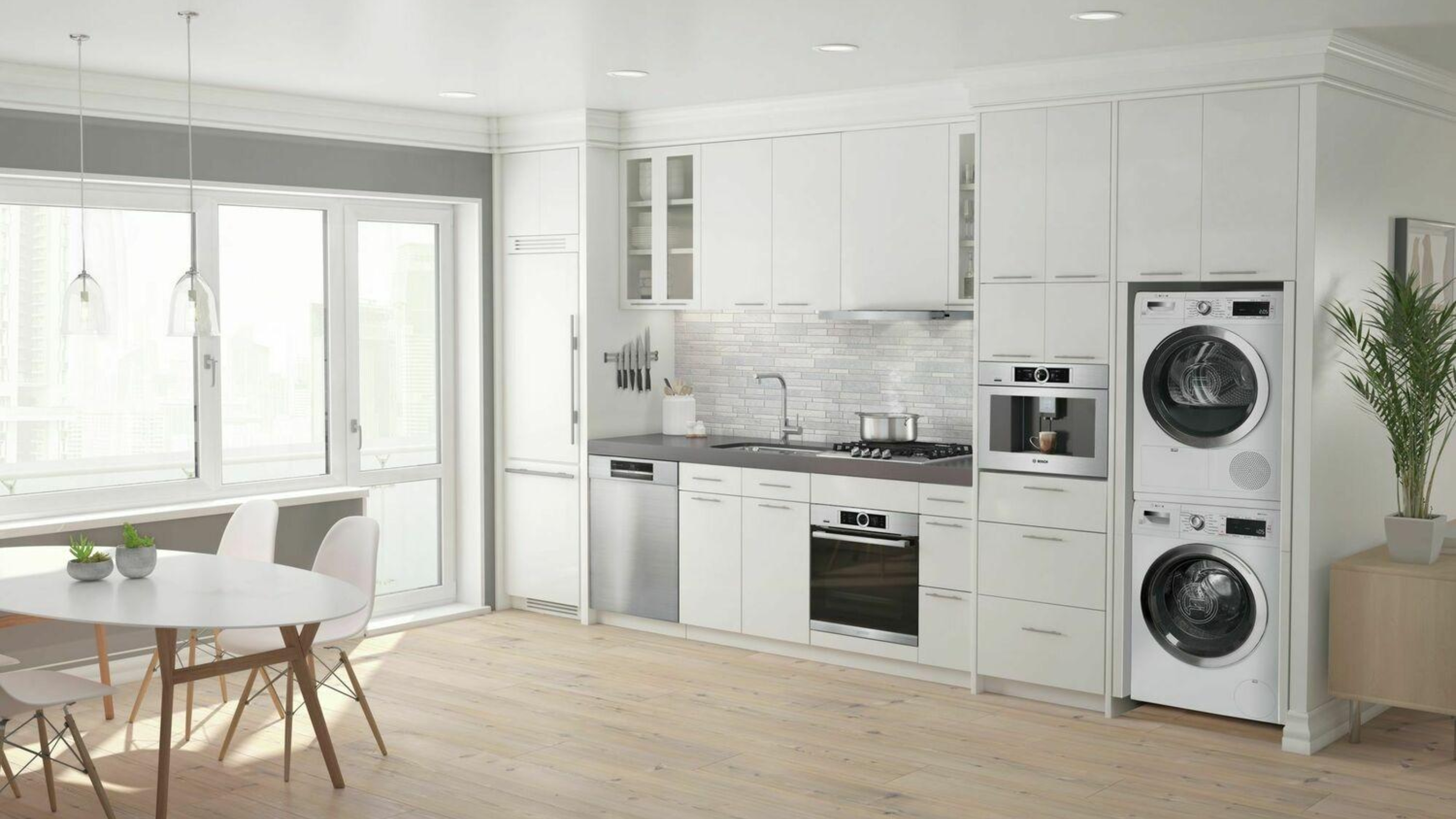
Laminate floors are popular for their affordability and durability. Cleaning laminate floors with vinegar is safe and effective, but it's essential to use a gentle approach to avoid damaging the surface.
As with most surfaces, beginning with a sweep or vacuum is worthwhile to remove any loose dirt or debris. Then it’s time for the vinegar.
Vanessa Bossart, founder of GreenTerra Cleaning, says, “Mix equal parts white vinegar and water in a spray bottle, lightly mist the surface, then clean with a damp, microfiber mop (such as the Conliwell Store microfiber mop with reusable pads from Amazon).
"This material is gentle on laminate surfaces and effectively picks up dirt and grime without scratching the floor. Microfiber is also excellent for distributing the cleaning solution evenly without leaving streaks.”
Since most laminate flooring has a fiberboard core, it will soften and swell if exposed to water.
Vanessa adds, “Using a spray helps to avoid oversaturation, and ensure your mop is wrung out so it’s no more than a little damp. This will avoid any warping of the planks. For added peace of mind and an even better finish, dry the floor with a clean, microfiber cloth."
The Amazon basics microfiber cloth multipack is highly rated and has over 72,000 reviews.
2. How to clean hardwood floors with vinegar
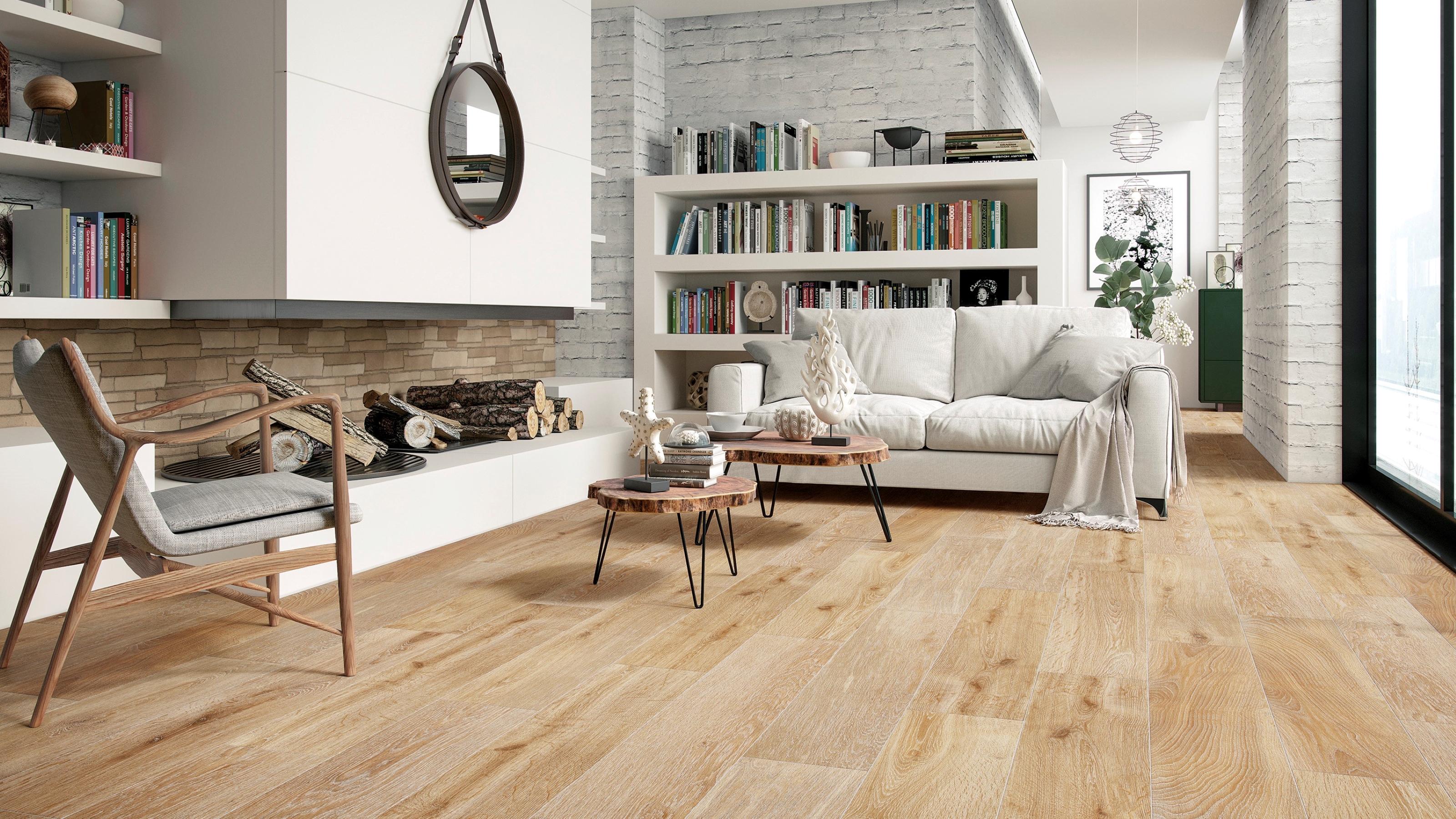
Hardwood floors exude elegance and are among the most durable floor types. However, they require gentle care to maintain their beauty. Vinegar can be used to clean hardwood floors, but it's crucial to dilute it properly to avoid damaging the wood.
Karina Toner, operations manager for Spekless Cleaning, says, “Hardwood floors require extra care, starting with the right vinegar to water ratio. For a safe but sparkling clean, dilute a quarter cup of white vinegar in a gallon of water. Dampen a microfiber mop with the solution and mop the floor, working in the direction of the wood grain."
Be careful to avoid soaking the floor as this can cause warping or discoloration if oversaturated.
Karina adds, “For extra security, test the solution on a small, inconspicuous area of the floor first to ensure compatibility with the floor finish. Always dry the floor thoroughly after cleaning to prevent water damage and streaking.”
3. How to clean tile floors with vinegar
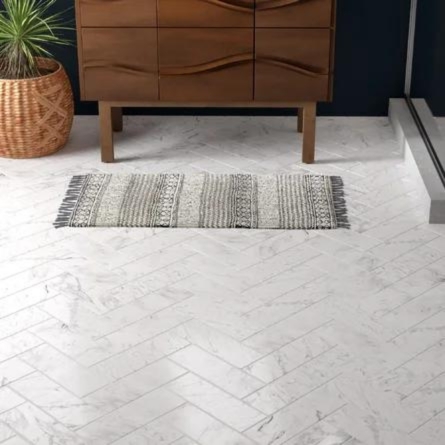
Tile floors are durable and easy to clean, making them a popular choice for kitchens, bathrooms, and high-traffic areas. Vinegar is an excellent cleaner for tile floors, effectively cutting through grease and grime.
Prepare by sweeping or vacuuming the floor to remove loose dirt and debris. In a spray bottle, mix equal parts of water and vinegar. Spray the vinegar solution onto the tile floor and let it sit for a few minutes to loosen dirt and stains. Wipe the floor with a damp cloth or mop, rinsing as needed.
For dirty grout lines, scrub them with a mixture of baking soda (such as this Arm & Hammer Baking Soda from Amazon) and vinegar to lift stains and brighten the grout.
After cleaning, rinse the floor with clean water to remove any vinegar residue, then dry with a towel or mop.
4. How to clean vinyl floors with vinegar
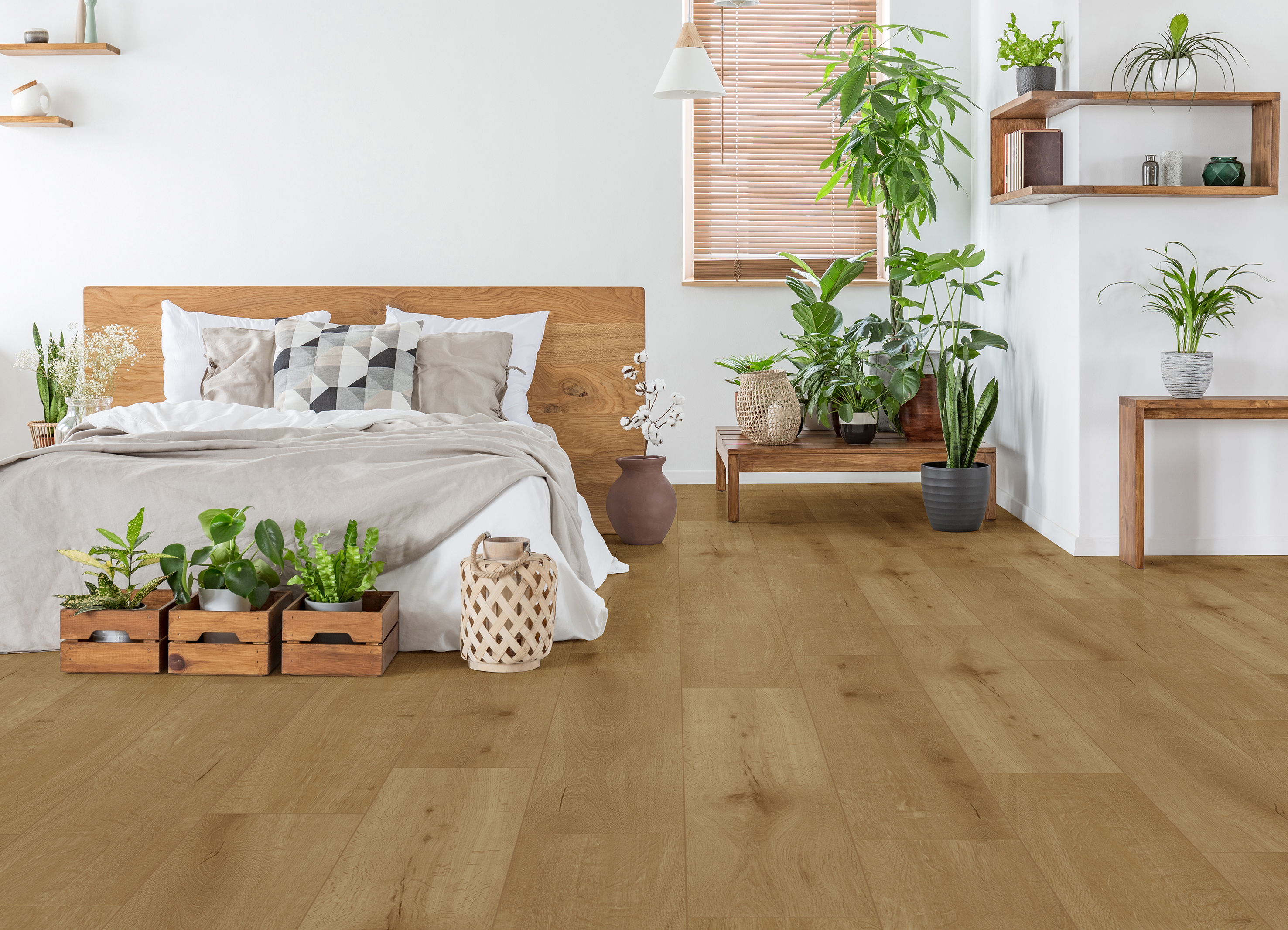
Vinyl flooring’s strongest feature is that it’s easy to care for and clean. When you add in its affordability, it’s easy to see why it’s such a popular choice for busy households.
Quality vinyl flooring is also coated with a transparent urethane layer that provides excellent stain resistance. Vinegar is a safe and effective cleaner for vinyl floors, helping to remove dirt, grease, and stains.
Karina says, “For vinyl, mix a solution of equal parts water and white vinegar, applied with a gentle touch via a mop. Avoid excessive saturation for optimal results.”
5. Floors to avoid cleaning with vinegar
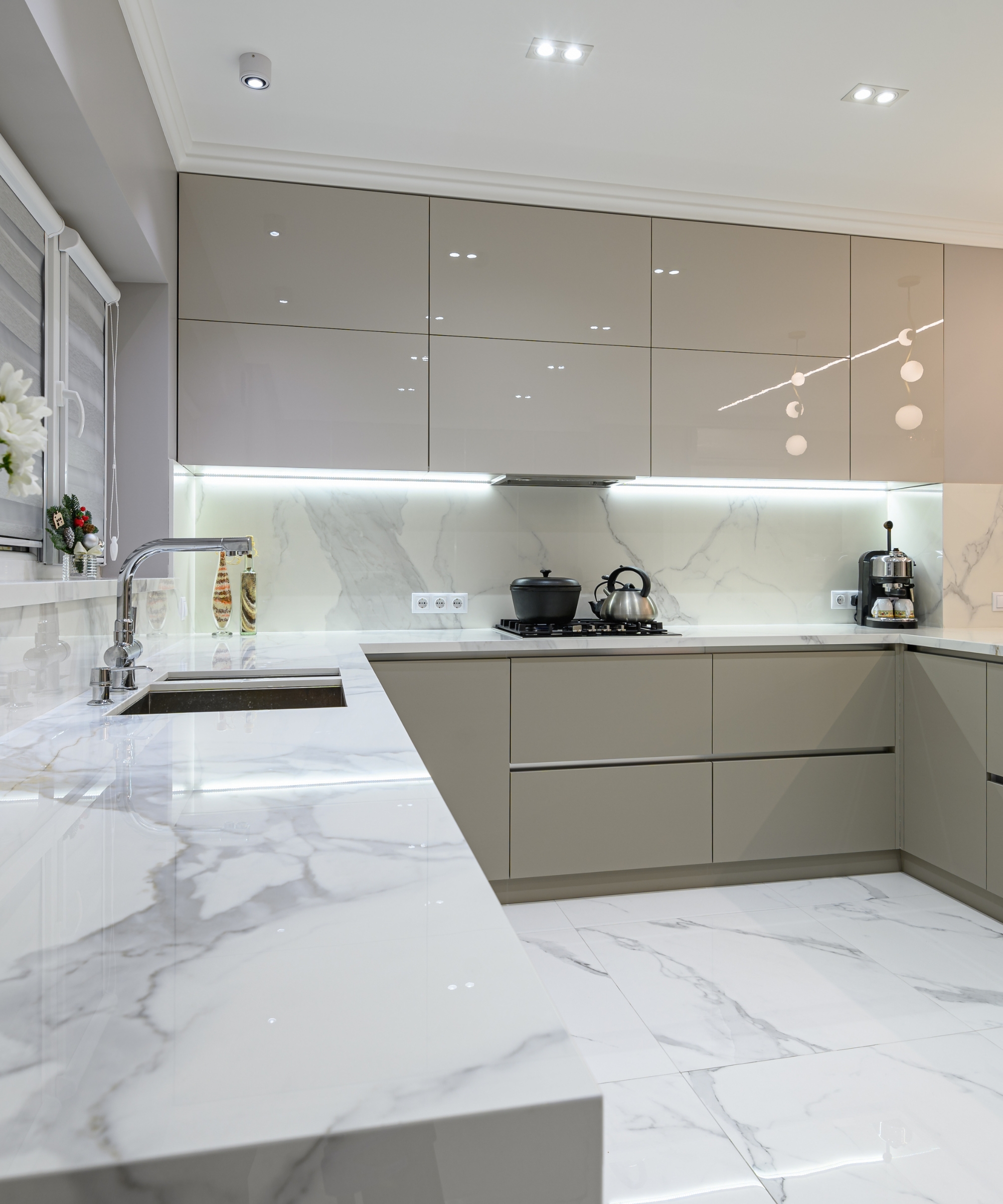
Though vinegar is a versatile cleaner, there are some floors you should avoid using it on, even when diluted. These include natural stone such as granite or marble, waxed floors and unsealed hardwood.
Cleaning marble surfaces, or other natural stone, requires particular care, and vinegar's acidity can easily etch or damage natural stone surfaces like granite, limestone and marble. Instead, use a pH-neutral cleaner specifically formulated for stone.
The Granite Gold stone and tile floor cleaner solution available on Amazon is highly rated by customers and doesn't require rinsing.
Vinegar can strip away wax finishes, leaving your floors dull and unprotected. For waxed floors, stick to a mild soap (such as Dawn original scent ultra dish soap from Target) and water solution.
Unsealed or unfinished hardwood floors are susceptible to water damage, and vinegar can exacerbate this risk. Use a wood-specific cleaner recommended by the manufacturer (we like the Method Almond Wood Floor Cleaner from Target).
Cleaning floors with vinegar is an eco and budget-friendly way to maintain a clean and healthy home.
By following the tips and techniques outlined in this guide, you can keep your floors looking flash while minimizing your environmental footprint. Our hallway floor ideas are perfect for fab first impressions.







